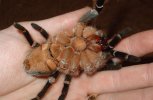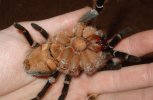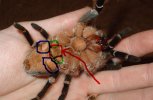Goldiesgiants
Member
- Messages
- 46
- Location
- Scotland
Are tarantulas protective of their food?
I just fed my T a medium cricket and I left the room for an hour. When I came back to get something the T automatically ran to the dead cricket and picked it up and just stood there with it. So I'm wondering if tarantulas are particularly protective of their food? Out of curiosity.
I just fed my T a medium cricket and I left the room for an hour. When I came back to get something the T automatically ran to the dead cricket and picked it up and just stood there with it. So I'm wondering if tarantulas are particularly protective of their food? Out of curiosity.




